It's the spice that makes chorizo red, stews hearty, bravas sauce spicy, Galician octopus smoky, and mojo picón fiery. Pimentón, AKA Spanish paprika, is as fundamental to Spanish cooking as black pepper is to kitchens across the US.
But believe it or not, this now-timeless spice wasn't always present in Spanish cuisine. In fact, when you consider the thousands of years of gastronomic history on the Iberian Peninsula, Spanish paprika only appeared (relatively) recently.
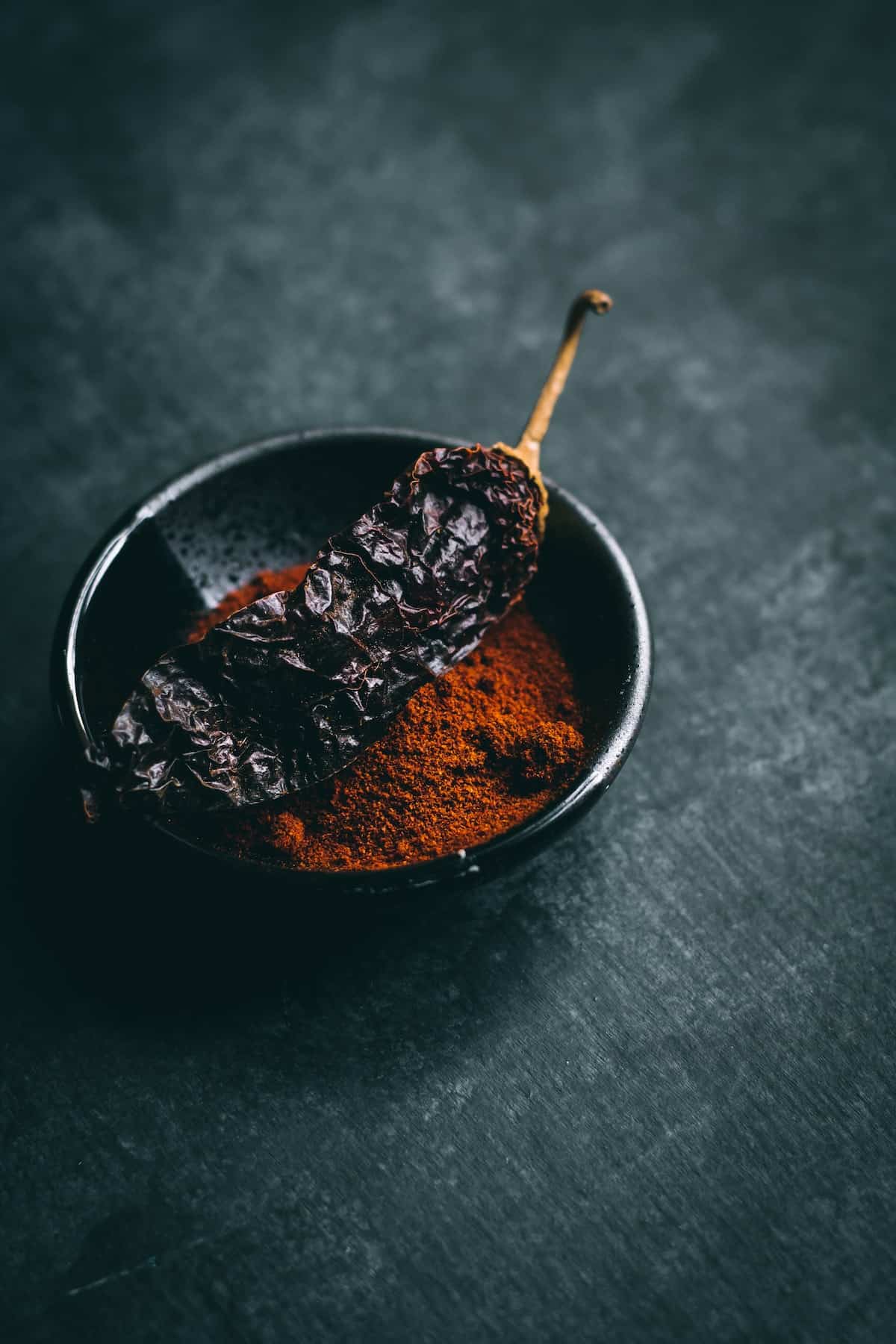
The cuisine of Spain may seem pretty mild, but look a little closer and you'll find that aromatics and spices actually play a subtle but strong role in many dishes. And the most ubiquitous of all Spanish seasonings is paprika.
In addition to being one of Spain's most essential kitchen staples, Spanish paprika is starting to pop up on ingredient lists for innovative contemporary recipes around the world.
In this guide, we'll show you everything you need to know about this crucial spice: where it comes from, how to use it, where to get it, and so much more.
A Brief History of Paprika
First of all, what is paprika? This spice is made from dried peppers that are ground into a fine powder. But when it comes to paprika's history, the more interesting question is where the peppers themselves came from.
Spaniards have Christopher Columbus, a convent of monks, and some funky soil to thank for the classic pop of red and punch of flavor that's now so essential to their national cuisine. Five hundred years ago, pimentón was half a world away from the cuisine it's come to define.
Capsicum annuum, the pepper used to make paprika, has grown in the fields of central Mexico for more than 2,000 years. But it wasn't until Columbus returned from the Americas in the late 15th century, ships laden with all kinds of new flavors, that these peppers made it to Europe.
Once they got here, they spread like wildfire.
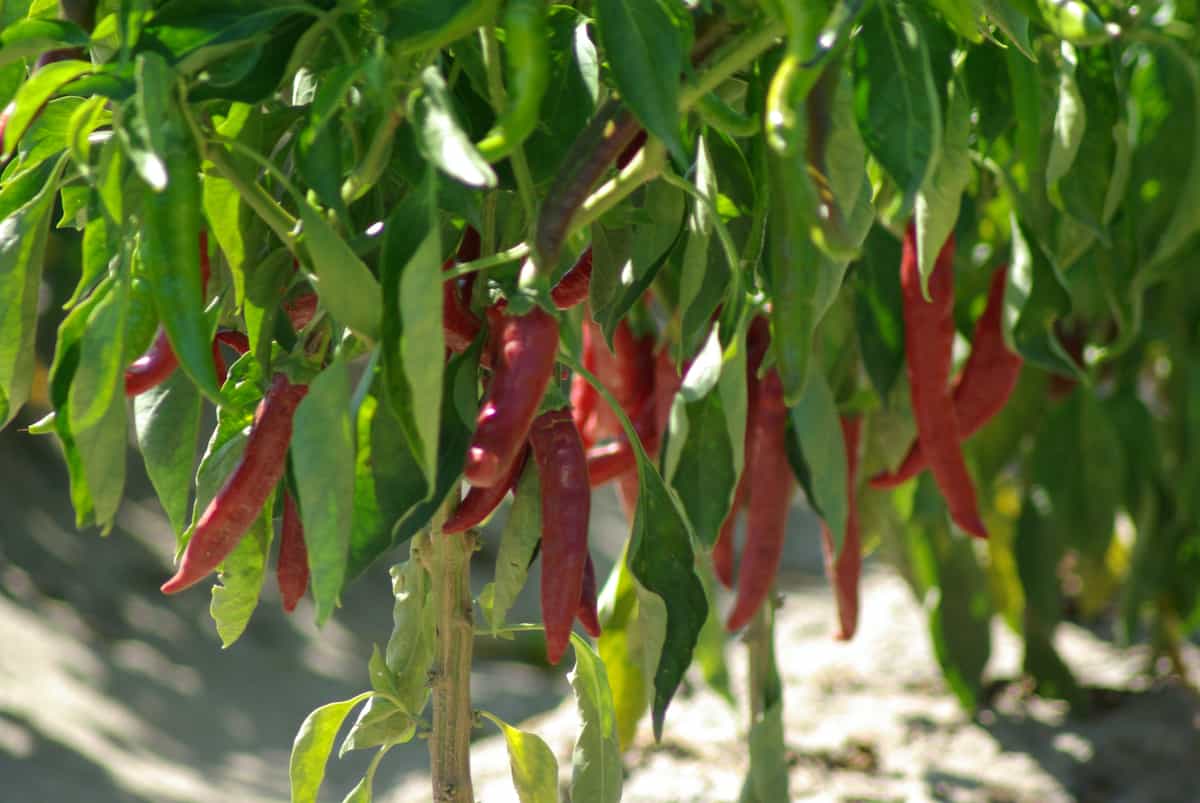
Traders brought the peppers from Spain to the Ottoman Empire in modern-day Turkey. Turkish immigrants then took them north through the Balkans and finally to Hungary, where paprika is still a staple of the local cuisine to this day.
While paprika was exploding across Europe, in Spain the peppers stayed put. In fact, they barely ventured outside the confines of a single monastery: San Jerónimo de Yuste in the western Spanish region of Extremadura.
The climate and geographical conditions of this area are perfect for cultivating these peppers, so the monks took full advantage. They first used paprika as a preservative for cured meats, and later as a seasoning for cooked dishes.

Spanish Paprika vs. Hungarian Paprika
Today, Spanish and Hungarian paprika are two of the most common varieties of the spice, with the latter arguably better known in places like the US. But the climate and preparation techniques differ greatly between Hungary and Spain, resulting in two distinct versions of the same seasoning.
The cooler climate in Hungary allows the peppers grown there to retain their natural sugars, resulting in a sweeter-tasting paprika. Hungarian paprika uses toasted peppers, and the final product comes in eight different varieties with varying degrees of pungency and spiciness.
Meanwhile, the warmer growing conditions in Spain change the flavor of the peppers—and the resulting paprika—quite a bit. Many (but not all) Spanish paprikas use smoked peppers, giving Spanish pimentón its signature smoky flavor (more on that in a bit!).
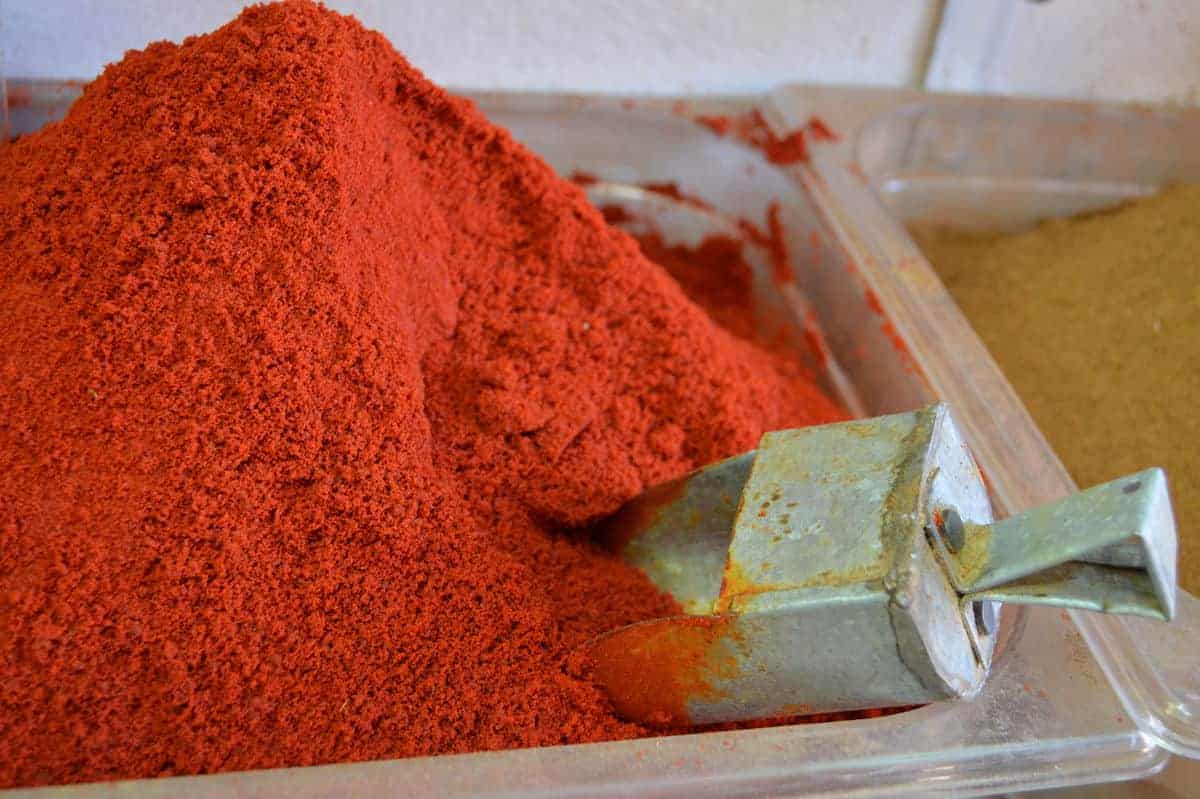
Paprika Production Regions in Spain
Paprika is so vital to Spanish cuisine that Protected Designation of Origin (PDO) boards regulate its production for quality control.
There are two main paprika-making regions in Spain: La Vera (in Extremadura) and Murcia. Both regions are under PDO control to ensure they follow the precise, centuries-old process of growing, smoking, and grinding the peppers.
Pimentón de la Vera: Smoked Spanish Paprika
Arguably the most popular type of Spanish paprika is that from La Vera, a corner of Extremadura less than 100 miles from the Portuguese border.
This is where the Jerónimos monks first created the characteristic technique for making Spanish paprika, which is now used to produce thousands of tons of the spice each year.
Around 1,300 hectares (over 3,200 acres) were planted with peppers for paprika production in La Vera in 2023. The region's unique soil and climate make the peppers high in carotene, which gives them their iconic bold red color. From mid-September through late October, harvesters pick the long, thin peppers by hand.
The peppers then slowly smoke in a specially designed wood-and-brick smokehouse for 10 to 15 days. A small oak-wood fire constantly simmers below the floorboards, gently drying the peppers and giving them their famous smoky flavor.
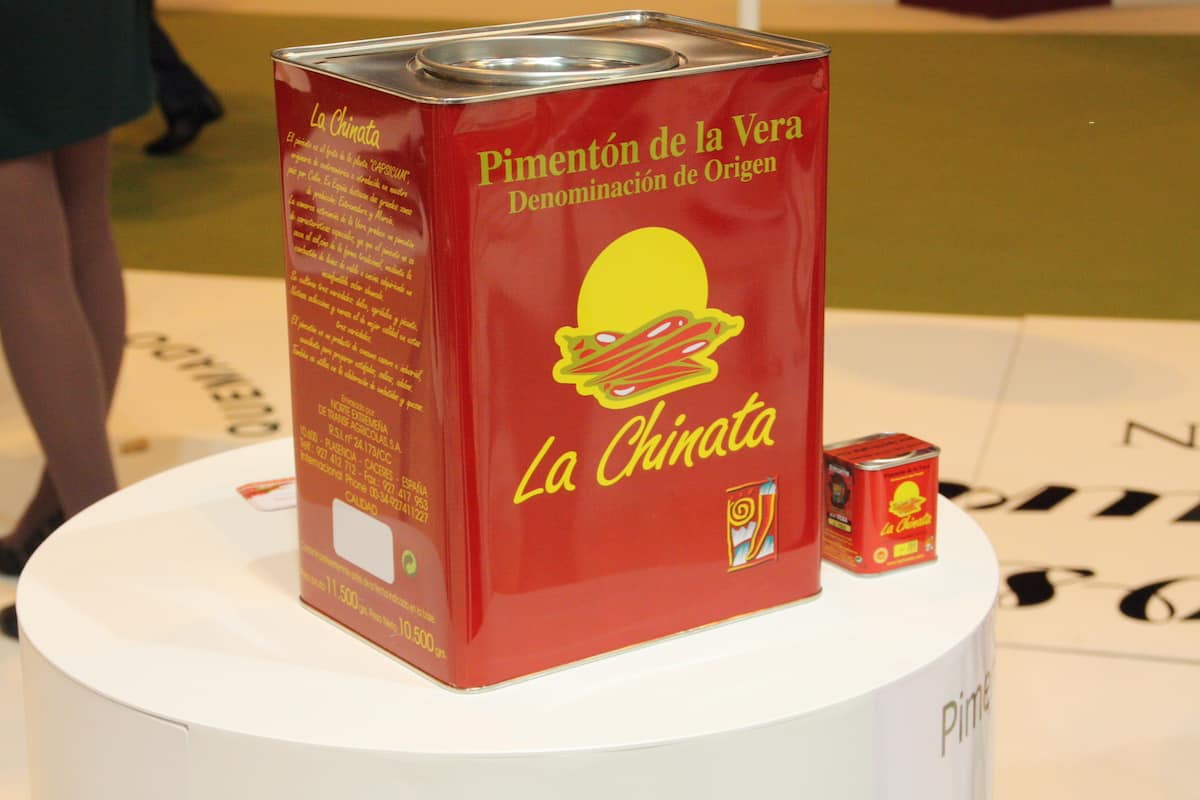
Four different types of pepper are used to produce pimentón de La Vera. Three (Jaranda, Jariza, and Jeromín) come from the Ocales variety, known for its spectacular deep red color.
Bola, the fourth type, was spicy 500 years ago when Columbus brought it to Spain, but the climate and soil here have made these peppers lose all of their capsaicin, the component that makes peppers hot.
The drying and mixing of these peppers determines the spiciness of the paprika. Pimentón de La Vera comes in three types:
- Picante (spicy), made from the spiciest Jeromín peppers
- Agridulce (bittersweet), made from the mild and beautifully bright red Jaranda and Jariza peppers
- Dulce (sweet), made from brilliantly red Jaranda peppers and sweet Bola peppers (this variety is still smoked and shouldn't be confused with other sweet Spanish paprikas, such as Murcian)
Pimentón de Murcia: Sweet Spanish Paprika
At one point, the Jerónimos monks from Extremadura brought their paprika-making secrets across the peninsula to another monastery of the same order in Murcia. Over the centuries, though, both the process and the peppers themselves have changed drastically.
Murcia uses only one type of pepper in its paprika: the sweet Bola variety. The growing conditions in Murcia have transformed it from the long, thin, spicy pepper of South America to the sweet, round, bell pepper-like version now used in Murcian pimentón.
The hand-picked peppers dry in the sun or in warm air driers over several days, rather than being smoked like in La Vera. In 2022, Murcia produced almost 3,000 tons of its uniquely sweet Spanish paprika—which is, unbelievably, still far less than La Vera.
Spanish Paprika Uses
Spanish paprika forms the base of many of the country's stewed, roasted, and boiled dishes.
One of the most popular ways to add a burst of flavor to nearly any Spanish dish is with sofrito, a slow-simmered sauce of olive oil, veggies, and pimentón. Sofrito is a common base for stews, beans, and even many paellas.
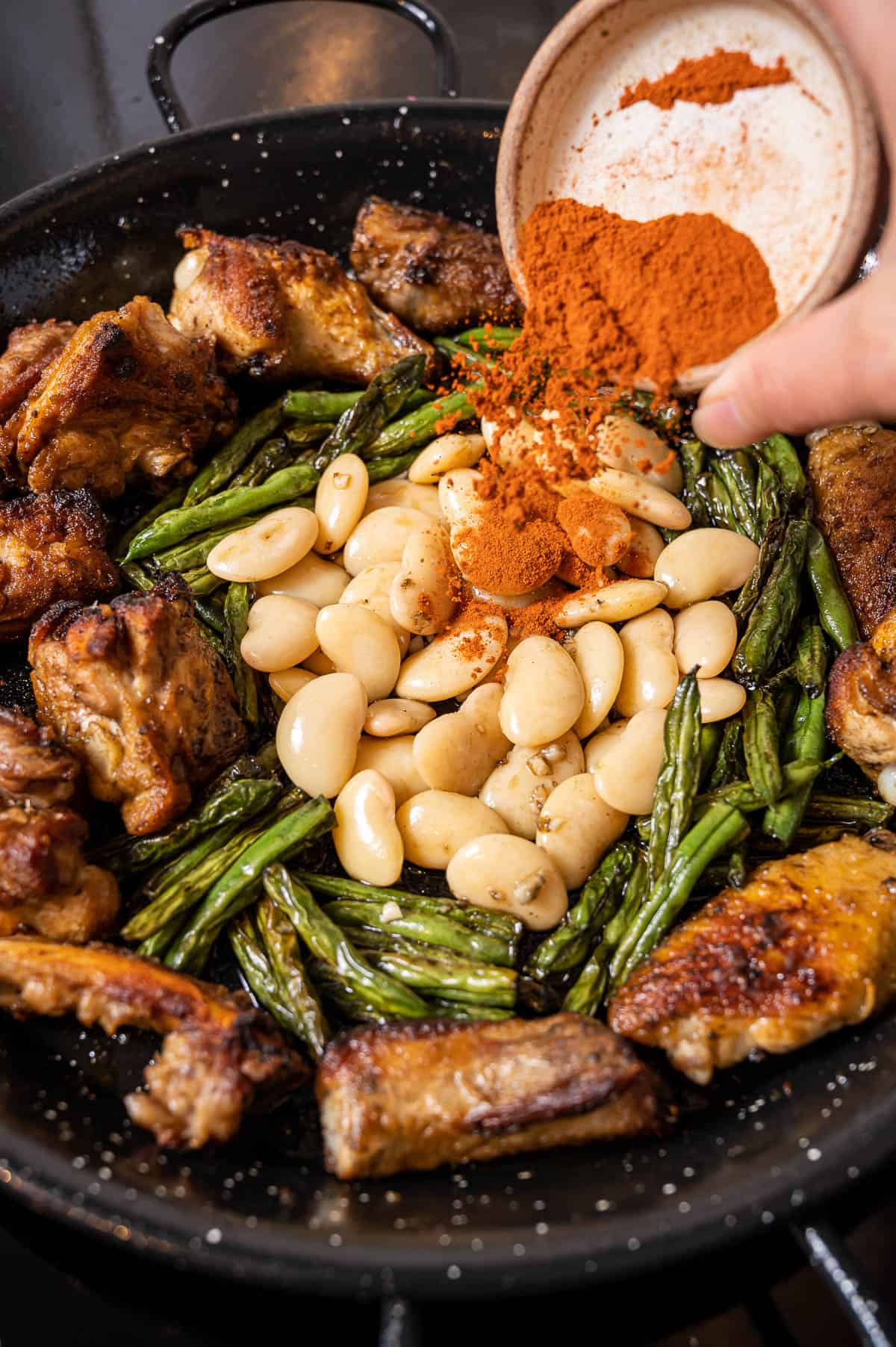
A decent amount of Spain's paprika also goes into making some seriously incredible cured meats, namely chorizo and sobrassada.
Depending on the region, chorizo can use either sweet or spicy paprika. The ground pork is heavily seasoned with pimentón, garlic, and salt, then stuffed into casings and lightly smoked for about two weeks.
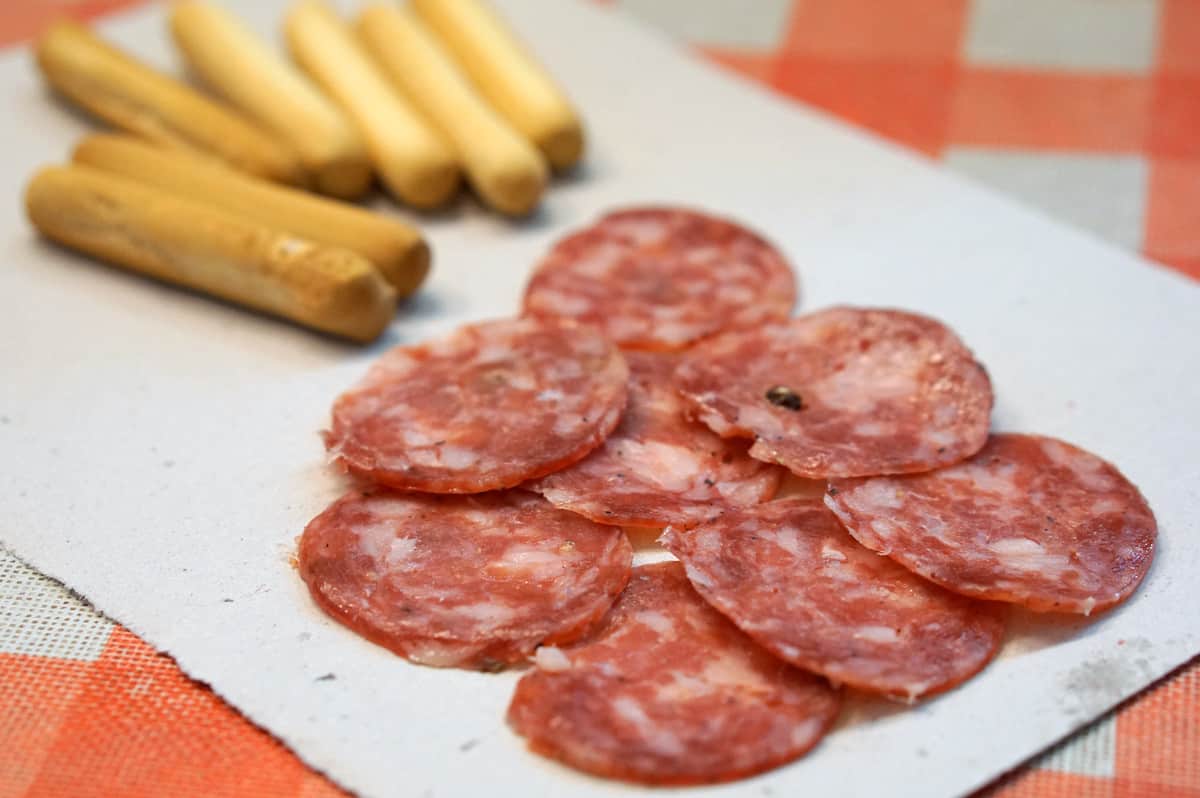
Sobrassada is very similar to chorizo in flavor, but with a texture all its own. Unlike its better-known cousin, sobrassada is spreadable!
Sobrassada is from the Balearic Island of Mallorca, and is typically made with a locally produced paprika called pimentón tap de cortí. The punchy, smoky, and paprika-heavy sobrassada is often served atop toasted bread with a sweet drizzle of local honey.
Spanish paprika is also a common addition to many of Spain's classic dishes like Galician-style octopus and lacón (thinly shaved roasted ham).
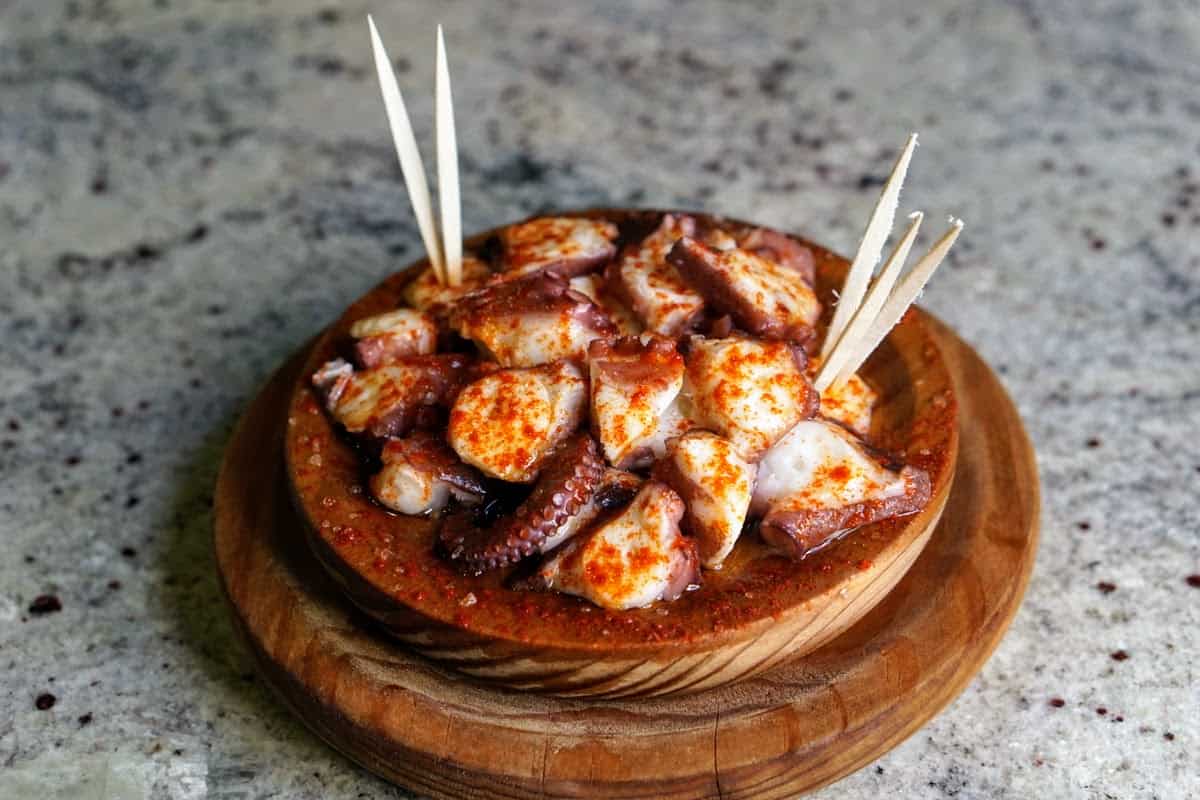
Spanish Paprika Recipes
Ready to give Spain's favorite spice a try for yourself? Here are some excellent recipes that use Spanish paprika to help get you started!
- Traditional Spanish Sofrito
- Pork & Chorizo Meatballs in Tomato Sauce
- Marmitako (Basque Tuna Stew)
- Pollo al Chilindrón (Chicken & Pepper Stew)
- Migas (Fried Breadcrumbs with Garlic & Chorizo)
- Spinach & Chickpea Stew
- Spanish Hummus
- Spanish Pork Skewers
- Zanahorias Aliñadas (Marinated Carrot Salad)
- Roasted Carrots with Cumin & Paprika
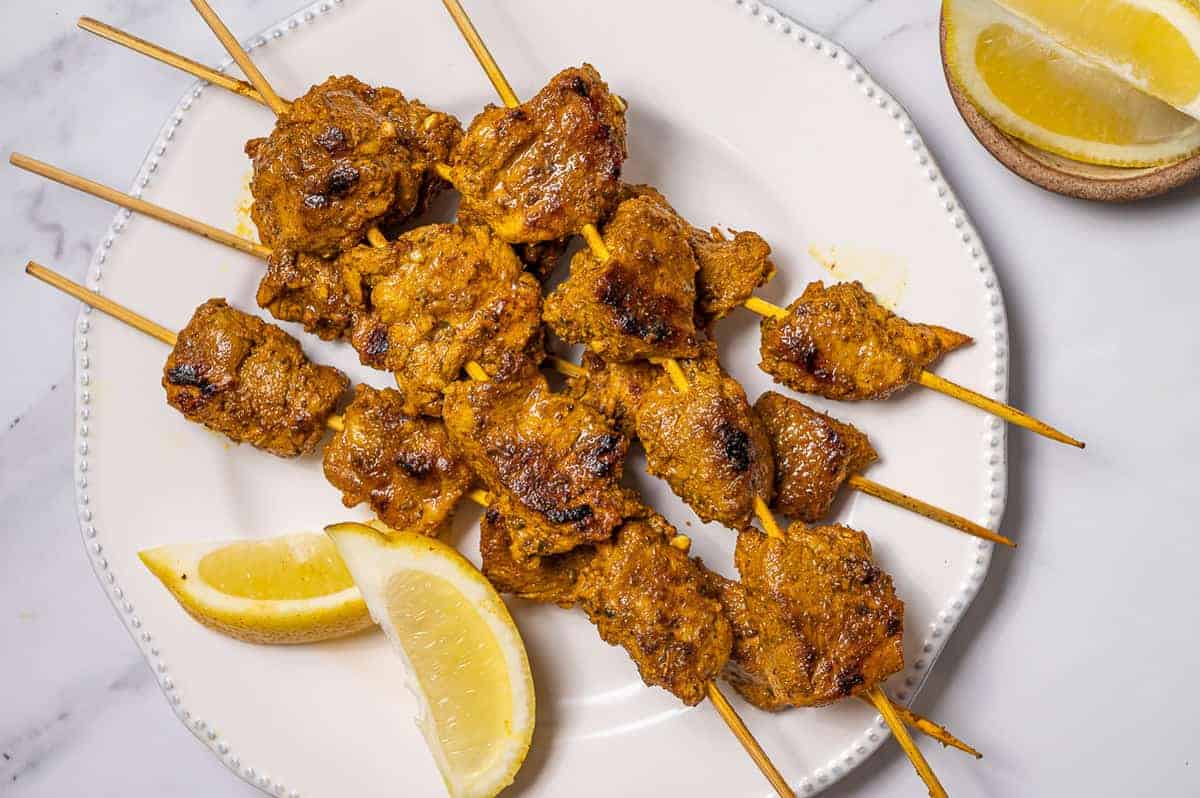
Where to Buy Spanish Paprika
Thanks to pimentón's growing popularity in global cuisines, more and more grocery stores around the world are stocking Spanish paprika. You can also find it at many specialty spice shops.
Online retailers specializing in Spanish products are also great options for buying pimentón. If you're in the US, La Tienda has a good selection of sweet, bittersweet, and spicy Spanish paprikas from La Vera.
Tip: Spanish paprika makes for a great gourmet holiday gift for the foodies in your life!
Spanish Paprika FAQs
While these paprikas can technically be swapped out for one another at a 1:1 ratio, doing so isn't recommended. The drastically different tastes will alter the flavor profile of your dish quite a bit. If a recipe recommends using one or the other, it's likely for good reason.
Pimentón is simply the Spanish word for paprika, a spice made from dried and ground peppers. You may also see it described as pimentón dulce (sweet paprika), pimentón picante (spicy paprika), and so on.
If you just see "paprika" in a recipe written in English, it most likely refers to sweet Hungarian paprika—the standard in countries such as the US. Spanish paprika is usually smokier in flavor, so the uses for each one can vary quite a bit!
Most Spanish paprikas have a notably smoky flavor. The level of sweetness or spiciness depends on the exact variety used.
Only paprikas specifically labeled as such (pimentón picante) will be spicy. Other common varieties of Spanish paprika are sweet (dulce) and bittersweet (agridulce).
These two terms are often used interchangeably. Most Spanish paprikas are smoked, and the technique of smoking peppers for paprika does come from Spain. For the best quality, look for a smoked paprika produced in the PDO region of La Vera.
However, not all Spanish paprikas are made with smoked peppers, so be careful! Some recipes, such as paella valenciana, work better with sweet (unsmoked) Spanish paprika. In this case, look for paprikas from the PDO region of Murcia.
Hungry for more? Sign up for my free weekly newsletter and receive a new Spanish recipe once a week! Join today and get my FREE Spanish ingredient essentials guide!


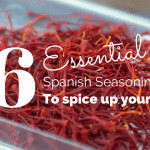

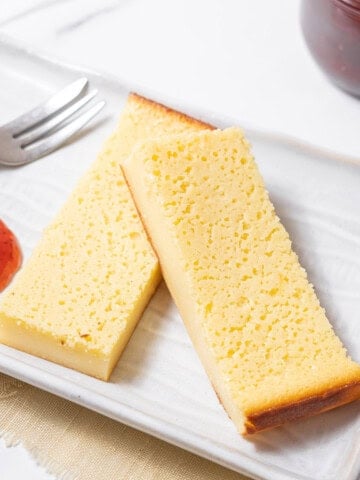
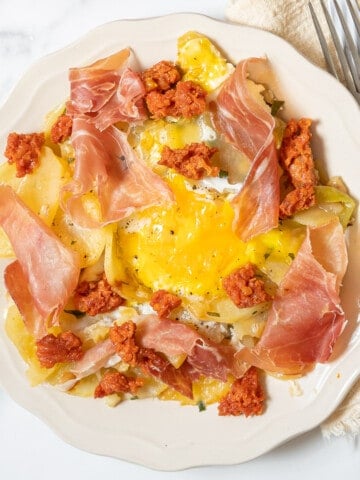
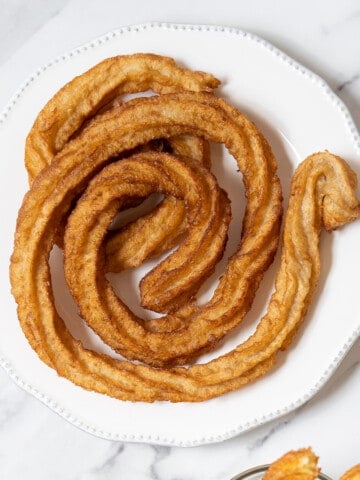
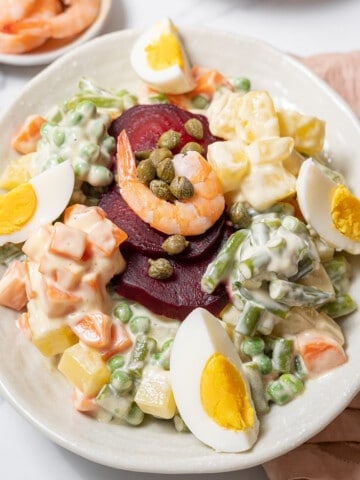
Peter Johnson
Could you please add a recipe for pulpo? Muchas gracias!
Lindsay
Great post Amy. Now while you are busy not sleeping, would you please also do a post like this for Hungarian paprika?
Ashley
I loved reading this post, it was super interesting, plus I LOVE pimentón so much. Pimentón on potatoes rocks my world!
Trevor Huxham
Really enjoyed reading this post, and I learned a LOT about this delicious spice! Who knew that the Bola pepper evolved away its capsaicin over the past 500 years? Crazy!
I use paprika now almost as much as I use salt and pepper—it’s just that good!—but I recently made mashed potatoes Spanish-style with olive oil and pimentón…it tasted great, nice and smoky.
Lauren Aloise
Yum, I love adding it to mashed potatoes!
Alba Luna
I love how you get into my culture and squeeze every little detail =)